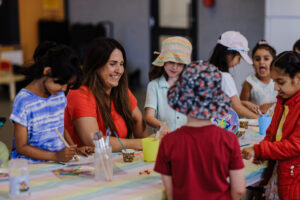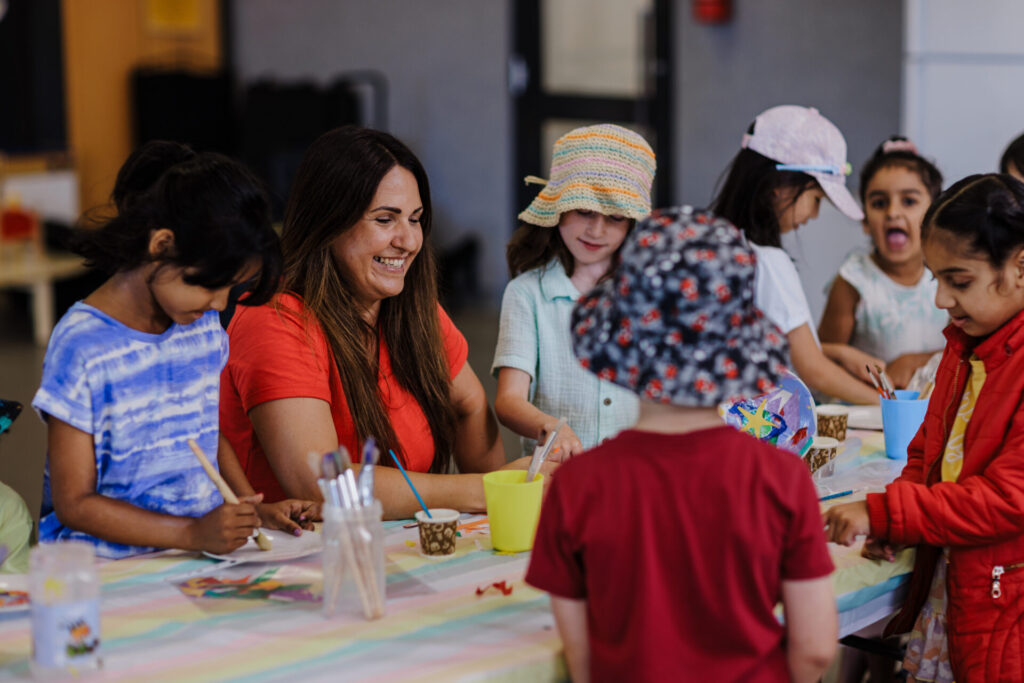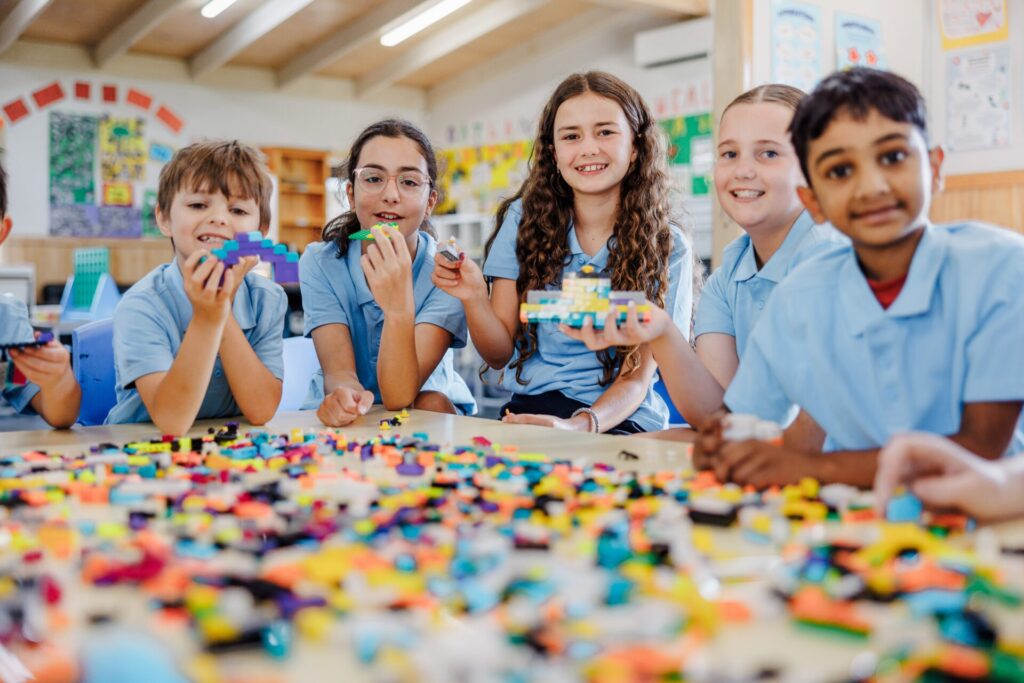News & Blog
News & Blog
Showing search results for XXXXXX
Search results

Roll into fun with this DIY Mini Bowling Alley






OSHC Explained: Out of Hours School Care

Bringing back the joy of play: Why it matters more than ever

Camp Australia Activities For Kids Aged 5-8

Camp Australia Activities For Kids Aged 9-12

Roll into fun with this DIY Mini Bowling Alley
Looking for a super fun activity that combines creativity and play? Get ready to design and decorate your very own miniature bowling alley! This DIY project lets your little ones design and decorate their own bowling lane, then enjoy a game with friends. It’s a hands-on activity that combines creativity

Fun, Learning & Adventure: What’s On at Your OSHC This Term 2
Term 2 is here, packed with exciting activities and opportunities for children to learn, grow and enjoy every moment. Let’s look at all the exciting key dates and events scheduled this school term with Camp Australia Term 2 school care programs. Play, Create and Celebrate Every Day Make play a

Big Art, Big Ideas: How Camp Australia Inspires Creativity in Every Child
Every Friday is art day at Camp Australia’s OHSC. Children are naturally creative, so what better way to get their creativity flowing at the end of their week than with Big Art activities? With a focus on fun and friendly contests, this is the kids art competition Australian children love

2025 School Holiday & Term Dates Across Australia: What Parents Need to Know
School holidays are a valuable opportunity for students to have some much needed rest and a break from the term just passed. And it’s not only a time for students – parents also look forward to relief from the daily routine of drop offs, pickups, school lunches and school uniforms.

Make Beautiful Nature-Inspired prints with Kerry Evitts
Looking for a fun and creative way to bring nature indoors? Let’s turn ordinary leaves into stunning butterfly prints! Inspired by the beauty of the outdoors, this hands-on activity is perfect for little artists who love to explore colours, textures, and patterns. Grab your paintbrush and let’s get started! What

Play! Why LEGO® Bricks Might Be the Building Blocks of Wellbeing
When was the last time you played just for the sake of it? No agenda. No end goal. Just play. For children, play isn’t just fun. It’s essential. And when it comes to creative, mindful play, LEGO bricks are little plastic superheroes. As an artist and psychotherapist, I’ve seen the

OSHC Explained: Out of Hours School Care
What is OSHC? OSHC stands for Outside School Hours Care – a place where primary school-aged children (typically 5 to 12 years old) can feel safe, supported and inspired outside of regular school hours. At Camp Australia, OSHC includes Before School Care, After School Care and our much-loved Rocketeers Vacation

Bringing back the joy of play: Why it matters more than ever
Bringing back the joy of play: Why it matters more than everChildhood looks a lot different today. With more screen time and packed schedules, kids have fewer opportunities for unstructured play. However, one thing hasn’t changed—play remains essential for children’s growth and development. At Camp Australia, we’re committed to bringing

Camp Australia Activities For Kids Aged 5-8
Children from the ages of 5-8 years old are full of wonder and enthusiasm for fun activities that keep them engaged and entertained. As parents, we want our children to learn as they play as well. Camp Australia offers a range of activities that are well suited to children in

Camp Australia Activities For Kids Aged 9-12
Camp Australia’s before, after school and holiday programs for children in the 9-12 age range offer both participants and parents the confidence that there will be a range of age-appropriate activities to keep them interested and entertained. Children in this age range have a few advantages over younger school children;

Roll into fun with this DIY Mini Bowling Alley
Looking for a super fun activity that combines creativity and play? Get ready to design and decorate your very own miniature bowling alley! This DIY project lets your little ones design and decorate their own bowling lane, then enjoy a game with friends. It’s a hands-on activity that combines creativity with friendly competition, providing hours of entertainment. Ready to roll? Let’s get started and create some mini bowling fun! What You’ll Need A Bowling Alley Kit (or craft supplies like cardboard, paper, and glue) Paint, markers, or stickers for decorating Small balls (like marbles or ping pong balls) Mini bowling pins (or make your own using small paper rolls) A

Fun, Learning & Adventure: What’s On at Your OSHC This Term 2
Term 2 is here, packed with exciting activities and opportunities for children to learn, grow and enjoy every moment. Let’s look at all the exciting key dates and events scheduled this school term with Camp Australia Term 2 school care programs. Play, Create and Celebrate Every Day Make play a part of your child’s wellbeing daily. Whether it’s trying something new, playing outdoors or creating a masterpiece, every day is a fresh chance for children to explore, create and be immersed in the pure joy of being active and creative. At Camp Australia, we celebrate the idea of play every day. Because we’ve seen the power of play and how

Big Art, Big Ideas: How Camp Australia Inspires Creativity in Every Child
Every Friday is art day at Camp Australia’s OHSC. Children are naturally creative, so what better way to get their creativity flowing at the end of their week than with Big Art activities? With a focus on fun and friendly contests, this is the kids art competition Australian children love to be immersed in. Make every Friday an artistic ‘yay-day’ with Camp Australia’s adventures in creativity. Why Art Matters for Children Creative expression through art is more than just fun. It can play an important role in a child’s emotional and developmental growth. By immersing themselves with artistic activities such as painting, drawing or crafting, art gives children a safe

2025 School Holiday & Term Dates Across Australia: What Parents Need to Know
School holidays are a valuable opportunity for students to have some much needed rest and a break from the term just passed. And it’s not only a time for students – parents also look forward to relief from the daily routine of drop offs, pickups, school lunches and school uniforms. This freedom from routine is a big bonus of school holidays for children and parents alike. School holidays are a time for some serious relaxation, spending time with family and friends and fun activities. But it’s not always easy for parents to keep their children entertained and engaged in activities that keep them motivated and help avoid those all-too-familiar ‘I’m

Make Beautiful Nature-Inspired prints with Kerry Evitts
Looking for a fun and creative way to bring nature indoors? Let’s turn ordinary leaves into stunning butterfly prints! Inspired by the beauty of the outdoors, this hands-on activity is perfect for little artists who love to explore colours, textures, and patterns. Grab your paintbrush and let’s get started! What you’ll need Leaves Acrylic aints Paintbrush Paper Black sharpie Step-by-step guide Step 1: Collect Your LeavesHead outside with an adult and gather some leaves. Look for different shapes to make unique butterfly wings! Step 2: Make Leaf PrintsUsing a paintbrush, apply green paint to the back of a leaf. Press it onto your paper, using another sheet or kitchen roll

Play! Why LEGO® Bricks Might Be the Building Blocks of Wellbeing
When was the last time you played just for the sake of it? No agenda. No end goal. Just play. For children, play isn’t just fun. It’s essential. And when it comes to creative, mindful play, LEGO bricks are little plastic superheroes. As an artist and psychotherapist, I’ve seen the power of play in many imaginable colours, shapes, and emotions. Play allows children to express themselves in a way that doesn’t require words; many children and adults struggle to put emotions and feelings into words, so creative play is a wonderful way to combat this. It can help to build self-confidence, relieve stress, and even nurture empathy. And yes, it

OSHC Explained: Out of Hours School Care
What is OSHC? OSHC stands for Outside School Hours Care – a place where primary school-aged children (typically 5 to 12 years old) can feel safe, supported and inspired outside of regular school hours. At Camp Australia, OSHC includes Before School Care, After School Care and our much-loved Rocketeers Vacation Care during school holidays. Why families love Your OSHC We know every family’s routine looks different – that’s why Your OSHC is designed to be flexible, reliable and easy to use. Whether it’s a busy morning before school or you need care into the evening, we’ve got you covered. Our programs even run on Pupil Free Days and throughout the

Bringing back the joy of play: Why it matters more than ever
Bringing back the joy of play: Why it matters more than everChildhood looks a lot different today. With more screen time and packed schedules, kids have fewer opportunities for unstructured play. However, one thing hasn’t changed—play remains essential for children’s growth and development. At Camp Australia, we’re committed to bringing play back through our Out of School Hours Care (OSHC) programs. We offer kids the freedom to explore, create, and connect in ways that screens and structured activities can’t replace. Why play is more than just funPlay isn’t just about having fun—it’s how kids learn best. Dr. Kathy Hirsh-Pasek, a leading child psychologist, says that play supports kids’ cognitive, social,

Camp Australia Activities For Kids Aged 5-8
Children from the ages of 5-8 years old are full of wonder and enthusiasm for fun activities that keep them engaged and entertained. As parents, we want our children to learn as they play as well. Camp Australia offers a range of activities that are well suited to children in this age range. We understand that children in their first years of primary school have different developmental and social needs than older school children. That’s why the team at Camp Australia have a range of activities for children aged from 5-8 years old that are fun while being beneficial to their development in so many ways. Let’s look at these

Camp Australia Activities For Kids Aged 9-12
Camp Australia’s before, after school and holiday programs for children in the 9-12 age range offer both participants and parents the confidence that there will be a range of age-appropriate activities to keep them interested and entertained. Children in this age range have a few advantages over younger school children; they are generally more settled in with the routines and experiences of school and have a better sense of who they are and what they enjoy. Activities That Aid in Children’s Development Children in their senior primary school years have different needs from their younger peers. That’s why Camp Australia has a range of activities that appeal to this age

Roll into fun with this DIY Mini Bowling Alley
Looking for a super fun activity that combines creativity and play? Get ready to design and decorate your very own miniature bowling alley! This DIY

Fun, Learning & Adventure: What’s On at Your OSHC This Term 2
Term 2 is here, packed with exciting activities and opportunities for children to learn, grow and enjoy every moment. Let’s look at all the exciting

Big Art, Big Ideas: How Camp Australia Inspires Creativity in Every Child
Every Friday is art day at Camp Australia’s OHSC. Children are naturally creative, so what better way to get their creativity flowing at the end

2025 School Holiday & Term Dates Across Australia: What Parents Need to Know
School holidays are a valuable opportunity for students to have some much needed rest and a break from the term just passed. And it’s not

Make Beautiful Nature-Inspired prints with Kerry Evitts
Looking for a fun and creative way to bring nature indoors? Let’s turn ordinary leaves into stunning butterfly prints! Inspired by the beauty of the

Play! Why LEGO® Bricks Might Be the Building Blocks of Wellbeing
When was the last time you played just for the sake of it? No agenda. No end goal. Just play. For children, play isn’t just

Roll into fun with this DIY Mini Bowling Alley
Looking for a super fun activity that combines creativity and play? Get ready to design and decorate your very own miniature bowling alley! This DIY project lets your little ones design and decorate their own bowling lane, then enjoy a

Fun, Learning & Adventure: What’s On at Your OSHC This Term 2
Term 2 is here, packed with exciting activities and opportunities for children to learn, grow and enjoy every moment. Let’s look at all the exciting key dates and events scheduled this school term with Camp Australia Term 2 school care

Big Art, Big Ideas: How Camp Australia Inspires Creativity in Every Child
Every Friday is art day at Camp Australia’s OHSC. Children are naturally creative, so what better way to get their creativity flowing at the end of their week than with Big Art activities? With a focus on fun and friendly

2025 School Holiday & Term Dates Across Australia: What Parents Need to Know
School holidays are a valuable opportunity for students to have some much needed rest and a break from the term just passed. And it’s not only a time for students – parents also look forward to relief from the daily

Make Beautiful Nature-Inspired prints with Kerry Evitts
Looking for a fun and creative way to bring nature indoors? Let’s turn ordinary leaves into stunning butterfly prints! Inspired by the beauty of the outdoors, this hands-on activity is perfect for little artists who love to explore colours, textures,

Play! Why LEGO® Bricks Might Be the Building Blocks of Wellbeing
When was the last time you played just for the sake of it? No agenda. No end goal. Just play. For children, play isn’t just fun. It’s essential. And when it comes to creative, mindful play, LEGO bricks are little

OSHC Explained: Out of Hours School Care
What is OSHC? OSHC stands for Outside School Hours Care – a place where primary school-aged children (typically 5 to 12 years old) can feel safe, supported and inspired outside of regular school hours. At Camp Australia, OSHC includes Before

Bringing back the joy of play: Why it matters more than ever
Bringing back the joy of play: Why it matters more than everChildhood looks a lot different today. With more screen time and packed schedules, kids have fewer opportunities for unstructured play. However, one thing hasn’t changed—play remains essential for children’s

Camp Australia Activities For Kids Aged 5-8
Children from the ages of 5-8 years old are full of wonder and enthusiasm for fun activities that keep them engaged and entertained. As parents, we want our children to learn as they play as well. Camp Australia offers a

Camp Australia Activities For Kids Aged 9-12
Camp Australia’s before, after school and holiday programs for children in the 9-12 age range offer both participants and parents the confidence that there will be a range of age-appropriate activities to keep them interested and entertained. Children in this

